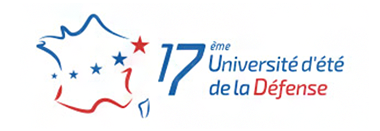CEA : TO CREATE YOUTH COMMITMENT
By François GELEZNIKOFF, Military applications Division Director of the CEA
The Military Applications Division (DAM) of the French Atomic Energy Commission (CEA) brings its skills and commitment of its personnel to serve defence and security of France.
The DAM’s programs (nuclear warheads for airborne and seaborne deterrent forces, nuclear reactors and reactor cores for the French Navy submarines and aircraft carrier propulsion, and fight against nuclear proliferation and terrorism) contributing to French nuclear deterrence, are defined on a long-term range. This allows a forward-looking management of employment and skills, according to its programs’ requirements.
The DAM employs 4,500 people and recruits from now and in the coming years between 250 and 300 people per year. Once recruited, every employee is offered many opportunities to develop his or her career within the CEA, whose workforce is over 16,000 people.
The people who will choose to join the DAM are ready to participate in major innovative projects covering various fields where key challenges remain. Job opportunities cover a wide range of activities: science research, technology, engineering, logistics, contractual or project management … Their expertise combined with the sense of responsibilities and taste for challenge will ensure them to have a fulfilling professional career.
Working for the DAM also means having access to world-class major research facilities, which we develop for our programs’ needs. DAM’s physicists design experiments on research facilities, with forecast simulations on very powerful supercomputers, they collaborate with engineers and technicians’ teams, qualified to conduct these experiments, and they rely on measurement results to improve physical models.
The research studies carried out at the DAM generate — within the limits set by the confidentiality rules — 2,000 publications per year, 400 of which are in the best international scientific reviews.
The DAM has developed a network of collaborations it develops with major engineering colleges and universities and uses this network to recruit scientists and technicians. Thus, our teams invest in training 150 postgraduates and post-doctoral researchers and train about 150 apprenticeships with the aim to develop this area.
At last, the DAM pays close attention to quality work life, in terms of living environment as well as transportation and access to services contributing to work-life balance.
The Military Applications Division (DAM) of the French Atomic Energy Commission (CEA) brings its skills and commitment of its personnel to serve defence and security of France.
The DAM’s programs (nuclear warheads for airborne and seaborne deterrent forces, nuclear reactors and reactor cores for the French Navy submarines and aircraft carrier propulsion, and fight against nuclear proliferation and terrorism) contributing to French nuclear deterrence, are defined on a long-term range. This allows a forward-looking management of employment and skills, according to its programs’ requirements.
The DAM employs 4,500 people and recruits from now and in the coming years between 250 and 300 people per year. Once recruited, every employee is offered many opportunities to develop his or her career within the CEA, whose workforce is over 16,000 people.
The people who will choose to join the DAM are ready to participate in major innovative projects covering various fields where key challenges remain. Job opportunities cover a wide range of activities: science research, technology, engineering, logistics, contractual or project management … Their expertise combined with the sense of responsibilities and taste for challenge will ensure them to have a fulfilling professional career.
Working for the DAM also means having access to world-class major research facilities, which we develop for our programs’ needs. DAM’s physicists design experiments on research facilities, with forecast simulations on very powerful supercomputers, they collaborate with engineers and technicians’ teams, qualified to conduct these experiments, and they rely on measurement results to improve physical models.
The research studies carried out at the DAM generate — within the limits set by the confidentiality rules — 2,000 publications per year, 400 of which are in the best international scientific reviews.
The DAM has developed a network of collaborations it develops with major engineering colleges and universities and uses this network to recruit scientists and technicians. Thus, our teams invest in training 150 postgraduates and post-doctoral researchers and train about 150 apprenticeships with the aim to develop this area.
At last, the DAM pays close attention to quality work life, in terms of living environment as well as transportation and access to services contributing to work-life balance.



